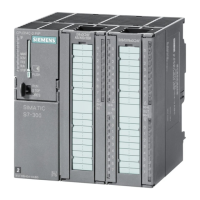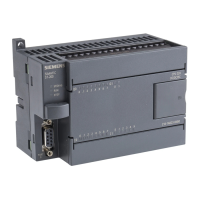6
Hard-Wired Control Prior to PLCs, many control tasks were performed by
contactors, control relays, and other electromechanical devices.
This is often referred to as
hard-wired control. Circuit
diagrams had to be designed, electrical components specified
and installed, and wiring lists created. Electricians would then
wire the components necessary to perform a specific task. If
an error was made, the wires had to be reconnected correctly.
A change in function or system expansion required extensive
component changes and rewiring.
OL
M
CR
CR
L1
T1
T2
T3
L2
L3
OL
OL
OL
M
M
CR
M
Motor
Start
Stop
460 VAC
24 VAC
1
2
Advantages of PLCs PLCs not only are capable of performing the same tasks as
hard-wired control, but are also capable of many more complex
applications. In addition, the PLC program and electronic
communication lines replace much of the interconnecting wires
required by hard-wired control. Therefore, hard-wiring, though
still required to connect field devices, is less intensive. This also
makes correcting errors and modifying the application easier.
Some of the additional advantages of PLCs are as follows:
• Smaller physical size than hard-wire solutions.
• Easier and faster to make changes.
• PLCs have integrated diagnostics and override functions.
• Diagnostics are centrally available.
• Applications can be immediately documented.
• Applications can be duplicated faster and less expensively.
Siemens Modular PLCs Siemens SIMATIC PLCs are the foundation upon which our
Totally Integrated Automation (TIA) concept is based.
Because the needs of end users and machine builders vary
widely, SIMATIC PLCs are available as conventional modular
controllers, embedded automation products, or as PC-based
controllers.
